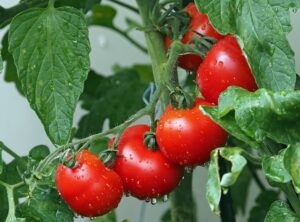Fermenting tomatoes is a simple and rewarding process that puts a delightful twist on one of the kitchen’s most versatile fruits. This age-old preservation technique not only extends the shelf life of tomatoes but also boosts their nutritional value by producing beneficial probiotics. With a few key ingredients—fresh tomatoes, salt, water, and your favorite herbs and spices—you can create a condiment or ingredient that adds a zesty flavor to any meal.
Introduction
Overview of the Fermentation Process
Fermentation is a remarkable process where microorganisms like bacteria and yeast convert organic substances into alcohol or acids. In the case of fermenting tomatoes, beneficial bacteria breakdown natural sugars, resulting in a tangy flavor and increased nutritional value. This age-old preservation technique not only extends the shelf-life of tomatoes but also creates probiotics that are good for gut health. During fermentation, it’s critical to maintain the right temperature and anaerobic conditions to ensure the desired outcome. Let’s dive into this culinary journey, transforming simple tomatoes into a gourmet delight.
Benefits of Fermenting Tomatoes
Fermented tomatoes are more than just a way to preserve your harvest; they are a treasure trove of health and flavor. The fermentation process enhances the bioavailability of nutrients, making it easier for your body to absorb vitamins and antioxidants present in tomatoes. Regular consumption of fermented foods has been linked to improved digestion due to the high levels of probiotics that support the balance of gut flora. These probiotics also strengthen the immune system, offering better defense against pathogens. Additionally, fermenting tomatoes can increase the levels of lycopene, a potent antioxidant known for its potential in reducing the risk of certain diseases. On a culinary level, fermented tomatoes introduce a complex, umami-rich flavor to dishes that can elevate even the simplest recipe with a burst of gourmet character.
Preparing the Tomatoes
To ensure the success of your fermented tomatoes, choosing the right type of tomato is crucial. Opt for firm, ripe tomatoes that are free from blemishes and bruises, as these will have the optimal balance of natural sugars required for fermentation. Heirloom varieties are particularly favored for their robust flavor profiles, which can further enhance the fermentation process.
Before fermenting, it’s essential to thoroughly wash and clean the tomatoes to remove any dirt or bacteria that could interfere with the fermentation process. Gently rinse them under cold running water, and if desired, use a natural bristle brush to clean the skins carefully.
Depending on your preferred texture for the fermented product, you can choose to cut or crush the tomatoes. For a chunkier finish, simply cut the tomatoes into halves or quarters. If a smoother texture is desired, crushing the tomatoes will release more juice and create a base that’s more conducive to a saucy end product. Remember that the size and condition of the tomatoes will affect the overall fermentation time and the intensity of the flavor.
Salting and Seasoning
The amount of salt used is crucial to the fermentation process, as it inhibits harmful bacteria while allowing beneficial lactobacillus to thrive. A general rule for creating a brine is to use approximately 2-3% salt by weight relative to the weight of the water. For example, if you are using 1 liter (1000 grams) of water, you would need about 20 to 30 grams of non-iodized salt. Dissolve the salt thoroughly in the water before adding it to the tomatoes to ensure even distribution and an optimal environment for fermentation.
Choosing seasonings and herbs to flavor your fermented tomatoes is an opportunity to get creative and tailor the end product to your personal taste. Classic herbs like basil, oregano, and thyme complement the natural tangy taste of tomatoes and evoke the essence of Italian cuisine. For a more complex profile, you can integrate spicy elements such as chili peppers or a hint of smokiness with smoked paprika. Fresh garlic and onions can be added for depth, while bay leaves impart a subtle yet distinct layer of flavor. Always ensure your seasonings and herbs are fresh or dried without additives that could disrupt the fermentation process.
Fermentation Vessel Setup
When choosing a fermentation vessel, it’s important to select one that is non-reactive, such as glass, ceramic, or food-grade plastic. A wide-mouth mason jar is a popular choice because it’s easy to load and allows you to keep an eye on the progress of your ferment. Ensure that the size of the jar is adequate to accommodate the volume of tomatoes and brine, while also leaving some space at the top to avoid overflow as gases are released.
To keep the tomatoes submerged and ensure an anaerobic environment, which is essential for proper fermentation, you can use a smaller glass jar filled with water as a weight, or purchase a specialized fermentation weight. Additionally, a cabbage leaf or a piece of food-safe plastic can be placed on top of the tomatoes before weighing them down. This will minimize the exposure of the tomatoes to air and reduce the risk of mold growth. Seal the jar with a fermentation lid, which allows gases to escape while keeping out contaminants, or use a standard lid but remember to “burp” the jar daily to release built-up gases.
The Fermentation Process
Ideal Temperature and Location
For effective fermentation of tomatoes, maintain a room temperature between 55-75°F (13-24°C). The vessel should be placed in a location with constant temperature away from direct sunlight, such as a kitchen cupboard or a basement shelf. Fluctuations in temperature can lead to inconsistent fermentation and potential spoilage.
Length of Time to Ferment
The fermentation period for tomatoes typically ranges from 2-4 weeks. Start tasting your tomatoes after the first week to determine if they’ve reached the desired level of tanginess. Smaller batches may ferment more quickly, while larger ones might need the full 4 weeks.
Signs of Successful Fermentation
Signs that your tomatoes are fermenting successfully include the presence of bubbles, indicating the release of carbon dioxide, and a tangy, acidic smell that is not unpleasant. The tomatoes will also have a distinct sour taste. The brine may turn cloudy, which is a natural part of the fermentation process. Make sure there is no foul odor or visible mold, as these can signify contamination.
Monitoring and Maintenance
Checking the Ferment Regularly
Keeping a close eye on your fermenting tomatoes is key to ensuring a successful outcome. Check the jars every few days to assess the fermentation progress and catch any issues early.
What to Look Out for
Be vigilant for signs of mold or yeast formations on top of the brine. Mold may appear fuzzy and can come in various colors such as white, green, or black. Yeast formations, on the other hand, may look like a white film and are typically harmless, but they should be removed to avoid off-flavors. If there is any visible mold, you should discard the batch to prevent potential health risks. Clear signs of unwanted yeast and mold are strong indicators that your fermentation environment may be compromised.
Stirring and Burping the Jars
It’s beneficial to gently stir the contents of the jar with a clean spoon to redistribute the bacteria and yeast. This will help prevent the development of mold. If you’re using a standard lid, burp the jars daily – this involves simply unscrewing the lid slightly to release any built-up gases and then retightening. This action helps avoid pressure buildup inside the jar which could cause it to crack or explode. If you’re using a fermentation lid, it will automatically allow gas to escape without the need for manual burping.
Storing Fermented Tomatoes
Once your tomatoes have finished fermenting, safe storage is crucial to maintain their quality and extend their shelf life. Transfer the fermented tomatoes into clean, airtight jars, ensuring that the tomatoes remain submerged in the brine. Store the jars in the refrigerator to significantly slow down the fermentation process.
Shelf Life Considerations
Properly stored, fermented tomatoes can last for several months in the refrigerator. The cold environment keeps the lactic acid bacteria active at a low level, preserving the tomatoes and preventing spoilage. However, always check for any signs of mold or an off odor before consuming, as these indicate that the tomatoes are no longer safe to eat. Regular tasting is also a good practice to determine if the flavor is still pleasing, as over time even refrigerated ferments can develop sour or undesirable tastes.
Using Fermented Tomatoes
Fermented tomatoes are a versatile ingredient that can add depth and a punch of probiotics to various dishes. Try incorporating them into fresh salads for a tangy twist, or blend them into a robust sauce to accompany pasta or pizza. For a lively appetizer, spoon chopped fermented tomatoes on top of crostini with a sprinkle of fresh herbs. They can also elevate your savory breakfast; mix them into scrambled eggs or layer on an open-faced sandwich with avocado. When used creatively, fermented tomatoes become not just a side but a flavorful focal point in your culinary creations.
Common Questions:
Can you ferment cherry tomatoes whole?
Yes, you can ferment cherry tomatoes whole. However, it is important to pierce each tomato with a fork or toothpick before placing them in the fermentation vessel to ensure that they are fully permeated with salt and seasonings. This will also help release any trapped air pockets within the tomatoes during the fermentation process.
What should fermented tomatoes taste like?
Fermented tomatoes should have a tangy and slightly sour taste, similar to pickled vegetables. The flavor can also be enhanced by the chosen seasonings and herbs used in the fermentation process. However, the exact taste may vary depending on factors such as the type of tomatoes used and length of fermentation time.
How long are fermented tomatoes good for?
Fermented tomatoes can last for several months if stored properly in the refrigerator. However, they will continue to ferment and develop more sourness over time. It is recommended to consume them within 3-4 months for optimal taste and texture. If any signs of spoilage are present, such as mold or unusual smells, it is best to discard the fermented tomatoes.
Conclusion
To summarize, fermenting tomatoes begins with piercing cherry tomatoes before immersing them in a seasoned brine to enhance their flavor. With patience, you allow the natural fermentation process to introduce a delightful tanginess to your tomatoes, making them a versatile ingredient in your kitchen repertoire.
Remember, fermentation is both an art and a science—feel free to experiment with different herbs, spices, and fermentation times to find the perfect flavor profile that excites your palate. Whether adorning a rustic piece of crostini or scrambled into your morning eggs, fermented tomatoes are sure to be a conversation starter. Embrace the process and watch your culinary creations transform with just a touch of time and creativity.


